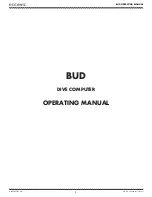
TR640IP
12760-0702-00
Page
12 / 18
www.ziehl.de
10.4 Description of the display pages
10.4.1 Measured value page (1/3)
- Measurements of all 6 sensors at a glance
- Sensor names (7 characters) can be set via web interface
- If a measured value triggers an alarm, it receives a coloured
background
- Pt100, Pt1000 sensors can be recognized by the unit
„°C“
- PTC thermistors can be recognized by the unit
„kΩ“
- Is one of the following signs used instead of the measured value:
o
„---“ is displayed, the sensor is deactivated
o
„>>>“ or „<<<“ is displayed, the current measured value is larger
or smaller than the measuring range
- Joystick button
o
Push short upwards => display page for min. / max. values
o
In the case of a backshift ready locked alarm, push the button 2s
upwards to reset the alarm.
10.4.2 Sensor to alarm assignment (2/3)
- Tabular assignment of the sensors to the alarms
X (white)=> sensor acts on alarm,
X (orange) => sensor has exceeded limit,
R (red) => sensor triggered alarm by the ROCOT function,
2 (orange) => two sensors triggered alarm by the function
„2 of x“
E (red) => sensor error (short circuit or sensor break)
- Alarm state of the relays can be seen
(Kx (white) => relay dropped, Kx (yellow) => relay energized)
- Set alarm limit
10.4.3 Info page (3/3)
- Currently installed firmware version
- Currently selected program
- Reset input 0 = open, 1 = closed
- Current IP-address of the device
- Actual voltage- / current values of the analogue outputs
10.5 Special functions
10.5.1 2 of x
For each alarm the function “2 of x” can be activated. That is at least two of the sensors associated with the
alarm must meet the conditions for the alarm to trigger the alarm.
To activate the function, there must be min. two sensors parametrised for the desired alarm.
10.5.2 Rate of change of temperature (ROCOT)
The ROCOT function sets a new average every 10s. The slope is calculated from the actual and the previous
average.
10.5.2.1 Slope (°C / s)
If the calculated slope is greater than the set value, the alarm becomes active.
10.5.2.2 Time (s)
Alarm if the set limit value would be reached at the same slope after the set time. In the time function, the
calculated slope is multiplied by the set time. The current measured value is then added to this value. If the
result is greater than the set alarm value for “alarm on”, the alarm is triggered.




































